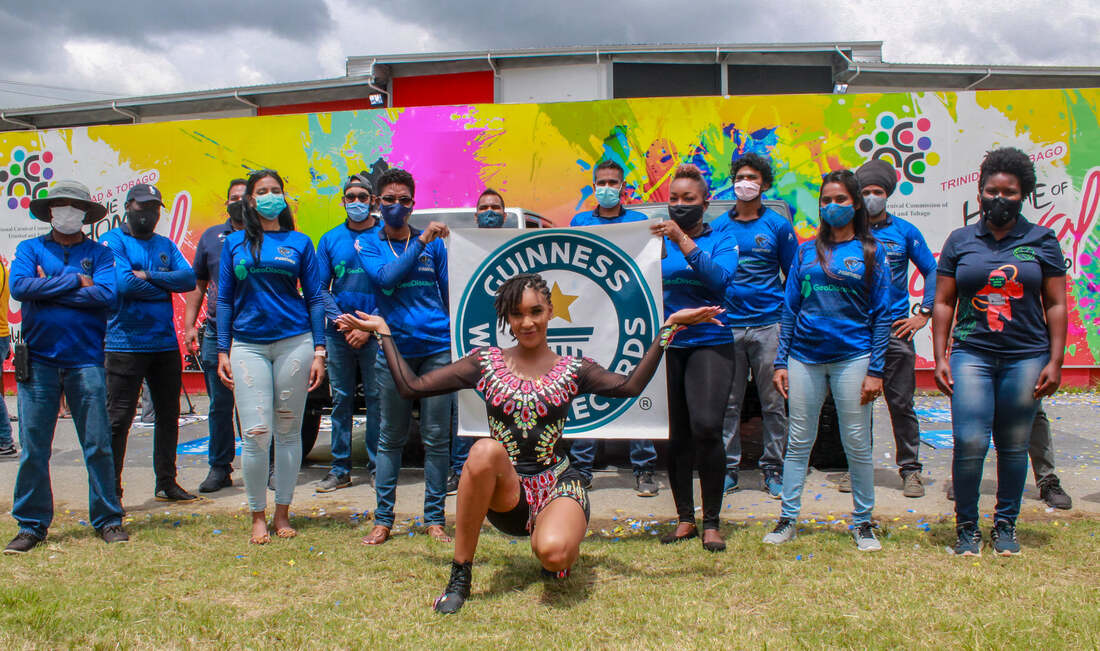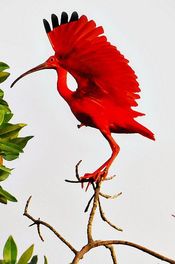|
Trinidad and Tobago’s Shemika Charles-Campbell attained her third Guinness World Record on Thursday 8, October 2020 at the Queen’s Park Savannah, Port-of-Spain, when she limbo danced under two jeeps that were below a height of 12 inches over a distance of more than 12 feet. Senator the Honourable Randall Mitchell, Minister of Tourism, Culture and the Arts, congratulates Trinidad and Tobago’s Shemika Charles-Campbell on attaining her third Guinness World Record on Thursday 8, October 2020 at the Queen’s Park Savannah, Port-of-Spain, when she limbo danced under two jeeps that were below a height of 12 inches over a distance of more than 12 feet.
Shemika achieved her second Guinness World record for limbo dancing in China in 2016 when she completed the task at a distance of over 10 feet. One year earlier she achieved the record for limbo dancing under a height of 8.5 inches in the United States. Congratulations Shemika! ...A big blow for Chaguanas, says economistTHE closure of MovieTowne in Price Plaza, Endeavour Road, Chaguanas, is going to be a huge loss to the Chaguanas borough and would cause serious economic fallout. So said economist Dr Indera Sagewan, as she noted that it’s a negative step in the development of the country’s business landscape.
Sagewan said the closure of the cinema and entertainment complex would have a ripple effect on businesses in and around the area, which have generated revenue from people flocking to the cinemas. “Employees and suppliers are also going to be affected and that means the unemployment statistics would also go up. Let’s be real. We cannot expect the owner Derek Chin to absorb all the workers at the other branches, as the pandemic has disrupted the cinema industry greatly and it’s going to take a while for the industry to revitalise, post Covid-19.” The economist explained that people living in Chaguanas who may want to head to the cinema when it reopens would now have to go either Port of Spain or South, which is a further cost in terms of gas for the car or public transportation. Sagewan believes that the Government should open up the economy more as there are a lot of best practices that can be implemented to help prevent the spread of the virus. “When you look at other countries, they have put mechanisms in place in order to facilitate the reopening of various sectors. But T&T seems to be stuck in this mode of waiting for the numbers to go down and more needs to be done by the Government,” Sagewan added. Chaguanas East MP Vandana Mohit said she preferred not to comment, at this time, as the issue was a private matter between the landlord and tenant. Mohit was previously the mayor of Chaguanas. Also commenting on the closure was Chaguanas Chamber president Vishnu Charran, who said it spells bad news for the borough as it means there is going to be less foot traffic and less revenue being earned. “It is sad to see the cinema had to shut its doors, but I understand that the economic impact caused by Covid is very serious and things are not going to get better anytime soon.” Charran outlined that other businesses located in Price Plaza will also feel the pinch, as there will be fewer customers coming to buy their products and more people can be on the breadline, due to this fallout. Source: Trinidad Express, Oct 2020 Fun Fishing & Exploring Mayaro Beach - Longest Beach In Trinidad & Tobago - Caribbean Sun, Sand, Sea10/3/2020 This is 22 year old Junior Subhan a part-time mechanic that today celebrates 10 CSEC subjects10/1/2020 Junior aka Amit has a story to tell of how he earned his CSEC passes in the face of tremendous adversities. He recalls many days of laughing and talking with friends who were unaware of how broke and hungry he was in several classes. He recalls that after failing Common Entrance he dropped out of school in form 1 to work and assist his sick mother who subsequently died. He continued working and finally gave himself a second chance and returned to school at 19 years old with the support of his aunt Ms. Nesha Ferreira. Despite her support for transport and tuition fees, Junior later realised that he still came up short on many days with little to eat and increasing expenses in the likeness of school materials. This prompted him to seek employment at a nearby mechanic shop where he was grateful to be allowed to work whenever he needed. He would occasionally work on weekends or miss a few days of school when necessary to buy textbooks or rations for the week. Sometimes even that was not enough and Junior found himself walking to and from school on many days. Despite what he was going through, his determination was stronger than his circumstances and he made use of the time he had and was often seen studying quietly in school. His advice to people who are in similar situation as he was in is to “not give up, no matter how hard it gets, try harder. The feeling you get at the end of the journey is worth all the pains during the process.” Junior earned a grade one pass in POA, 6 Grade 2s and 3 Grade 3s and wants to eventually become an entrepreneur. The mechanic is currently working to save enough money to start ACCA classes. He dedicates his passes to his aunt Ms. Nesha Ferreira and thanks her for giving him a second chance at life. Let’s congratulate Amit and share his story to inspire someone in similar circumstances. -Sponsor a child’s education and register at IBE Interactive Source: IBE INTERACTIVE September 24, 2020 |
T&T news blogThe intent of this blog is to bring some news from home and other fun items. If you enjoy what you read, please leave us a comment.. Archives
June 2025
Categories
All
|









 RSS Feed
RSS Feed